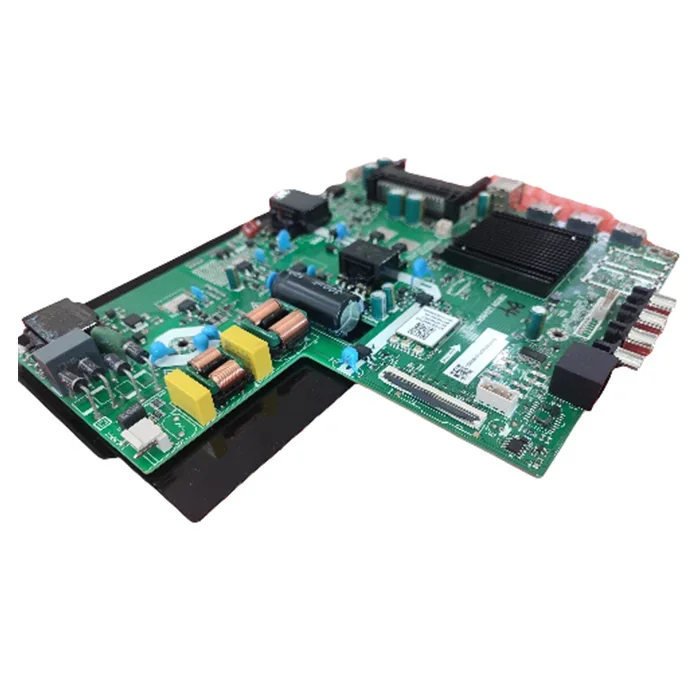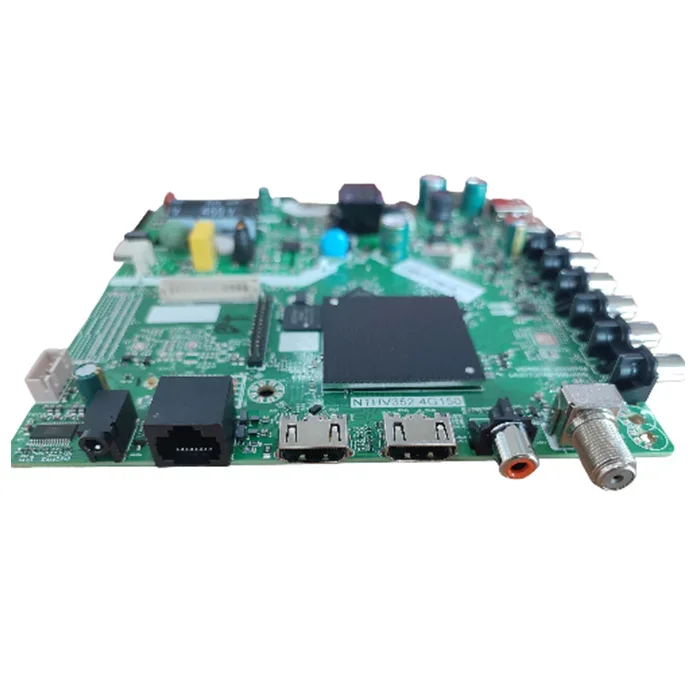A TV motherboard is a crucial component that controls the overall functionality of your television. However, like any electronic device, it can encounter issues that affect its performance. In this blog post, we will explore some common problems that can arise with TV motherboards and provide effective solutions to troubleshoot them.
Exploring Smart TV Motherboard Basics
Types
Smart TV motherboards come in various types, including factory and workstation TV motherboards. These components are crucial for the functionality of smart TVs.
Functions
The primary function of a TV motherboard is to serve as the central hub that connects all other components within the TV. It controls functions like power supply, audio, video processing, and connectivity options.
Sizes
Smart TV motherboards vary in size based on the specific model and brand. They can range from compact sizes for smaller TVs to larger boards for high-end smart TVs with advanced features.

Key Components and Their Functions
Central Processing Unit (CPU)
The Central Processing Unit (CPU) is the brain of the smart TV motherboard, responsible for executing instructions and performing calculations. It processes data, controls the overall operation of the TV, and influences its speed and performance.
Random Access Memory (RAM)
Random Access Memory (RAM) stores temporary data that the CPU needs to access quickly. It allows the smart TV to run multiple applications simultaneously without lagging. More RAM results in smoother multitasking and faster response times.
Graphics Processing Unit (GPU)
The Graphics Processing Unit (GPU) handles rendering images, videos, and animations on the screen. It directly impacts the visual quality of the smart TV, ensuring sharp images, vibrant colors, and smooth motion during video playback or gaming.
Storage
The Storage component stores the operating system, apps, and user data. It can be in the form of solid-state drives (SSD) or hard disk drives (HDD). Faster storage options lead to quicker boot times and app loading speeds on the smart TV.
Input/Output Ports
Input/Output Ports allow external devices to connect to the smart TV. HDMI ports enable high-definition video and audio transmission, USB ports facilitate data transfer, and Ethernet ports provide wired internet connectivity for streaming content.
Troubleshooting Common Issues
Power Supply
When a smart TV motherboard fails to power on, check the power supply first. Ensure the power cord is securely connected and the outlet is functional.
Display Problems
If your smart TV displays abnormal colors or flickering images, it could indicate a motherboard issue. Try different HDMI cables and ports to rule out external factors.
Audio Malfunctions
In case of no sound or distorted audio, inspect the audio settings on both the TV and external devices. Update firmware and drivers for potential motherboard audio issues.
Remote Control Connectivity
Issues with remote control responsiveness might stem from the motherboard. Replace batteries, re-pair the remote, or perform a factory reset to troubleshoot.
Network Connectivity
For network-related problems, restart your router and TV. Ensure there are no physical obstructions blocking the Wi-Fi signal to the motherboard.

Preventive Measures and Care Tips
Regular Maintenance
To prolong the lifespan of your smart TV motherboard, ensure to conduct regular maintenance checks. Clean the motherboard gently using a soft, dry cloth to remove dust and debris.
Proper Ventilation
Ensure that your smart TV has sufficient ventilation to prevent overheating issues that can damage the motherboard. Avoid blocking air vents or placing objects near the TV that can obstruct airflow.
Power Surge Protection
Invest in a quality surge protector to safeguard your smart TV motherboard from power surges and voltage fluctuations. This helps prevent sudden electrical spikes that can harm the delicate components.
Software Updates
Regularly update your smart TV's software to maintain optimal performance and security. Outdated software can lead to vulnerabilities that hackers can exploit, potentially causing damage to the motherboard.

Conclusion
A smart TV motherboard is the brain of your entertainment system, seamlessly integrating a wide range of features. When choosing a smart TV for your needs, it’s important to understand its key components, features, and how they affect your viewing experience. Regular maintenance and troubleshooting can also help extend the life of your smart TV motherboard, ensuring optimal performance for years to come.
Frequently Asked Questions
What are the key components of a smart TV motherboard?
The key components of a smart TV motherboard include the CPU, RAM, GPU, storage chips, power management unit, and input/output ports. Each component plays a crucial role in ensuring the proper functioning of the smart TV.
How can I troubleshoot common issues with my smart TV motherboard?
To troubleshoot common issues with your smart TV motherboard, you can start by checking for loose connections, updating firmware, resetting the TV to factory settings, and inspecting for physical damage. If problems persist, consult a professional technician.
What preventive measures can I take to extend the lifespan of my smart TV motherboard?
To extend the lifespan of your smart TV motherboard, ensure proper ventilation around the TV, avoid power surges by using a surge protector, keep the TV clean from dust and debris, and avoid blocking ventilation openings on the TV.
Why is it important to understand the basics of a smart TV motherboard?
Understanding the basics of a smart TV motherboard helps users make informed decisions when troubleshooting issues, upgrading components, or seeking professional help. It empowers users to communicate effectively with technicians and enhances overall user experience with the smart TV.
How can I care for my smart TV motherboard to ensure optimal performance?
To care for your smart TV motherboard, avoid exposing it to extreme temperatures or moisture, handle it gently during maintenance or upgrades, perform regular dusting and cleaning of the TV vents, and refrain from overloading the electrical circuits connected to the TV.
